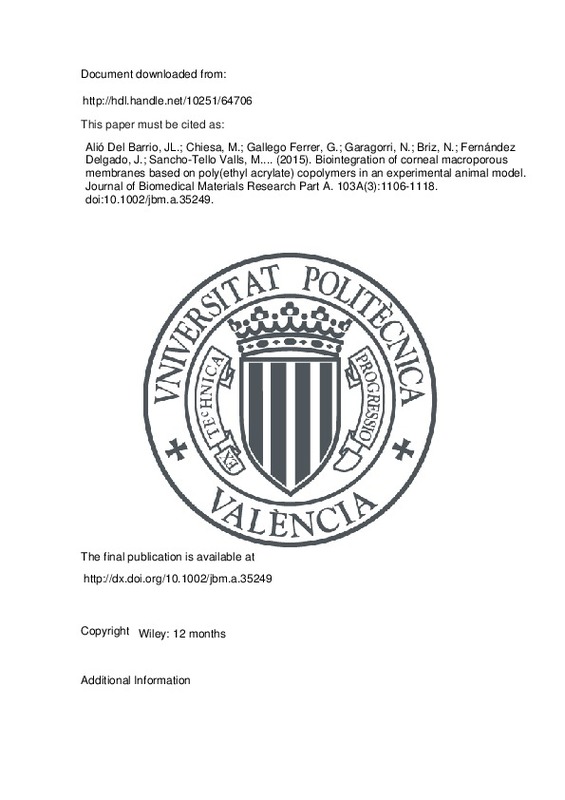JavaScript is disabled for your browser. Some features of this site may not work without it.
Buscar en RiuNet
Listar
Mi cuenta
Estadísticas
Ayuda RiuNet
Admin. UPV
Biointegration of corneal macroporous membranes based on poly(ethyl acrylate) copolymers in an experimental animal model
Mostrar el registro completo del ítem
Alió Del Barrio, JL.; Chiesa, M.; Gallego-Ferrer, G.; Garagorri, N.; Briz, N.; Fernández Delgado, J.; Sancho-Tello Valls, M.... (2015). Biointegration of corneal macroporous membranes based on poly(ethyl acrylate) copolymers in an experimental animal model. Journal of Biomedical Materials Research Part A. 103A(3):1106-1118. https://doi.org/10.1002/jbm.a.35249
Por favor, use este identificador para citar o enlazar este ítem: http://hdl.handle.net/10251/64706
Ficheros en el ítem
Metadatos del ítem
| Título: | Biointegration of corneal macroporous membranes based on poly(ethyl acrylate) copolymers in an experimental animal model | |
| Autor: | Alió del Barrio, Jorge L. Chiesa, Massimo Garagorri, Nerea Briz, Nerea Fernández Delgado, Jorge Sancho-Tello Valls, María Carda Botella, Carmen García-Tuñón, Ignacio Bataille, Laurent Rodríguez, Alejandra Arnalich Montiel, Francisco Antolinos Turpín, Carmen María | |
| Entidad UPV: |
|
|
| Fecha difusión: |
|
|
| Resumen: |
Currently available keratoprosthesis models (nonbiological corneal substitutes) have a less than 75% graft survival rate at 2 years. We aimed at developing a model for keratoprosthesis based on the use of poly(ethyl acrylate) ...[+]
|
|
| Palabras clave: |
|
|
| Derechos de uso: | Reserva de todos los derechos | |
| Fuente: |
|
|
| DOI: |
|
|
| Editorial: |
|
|
| Versión del editor: | http://dx.doi.org/10.1002/jbm.a.35249 | |
| Código del Proyecto: |
|
|
| Agradecimientos: |
|
|
| Tipo: |
|







![[Cerrado]](/themes/UPV/images/candado.png)


